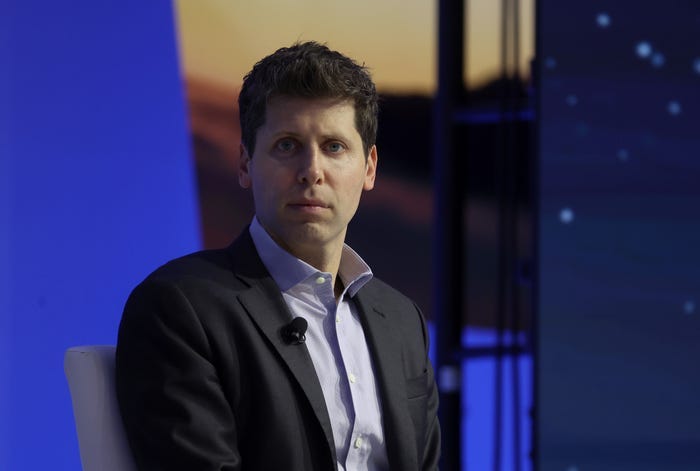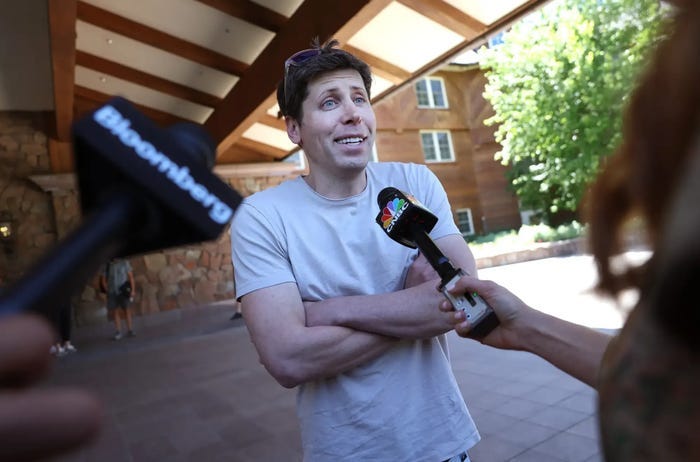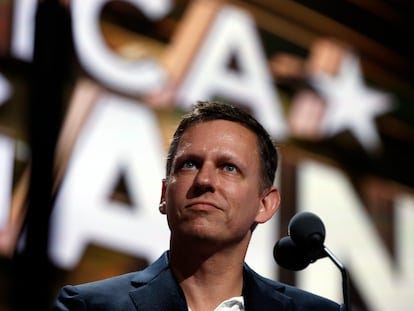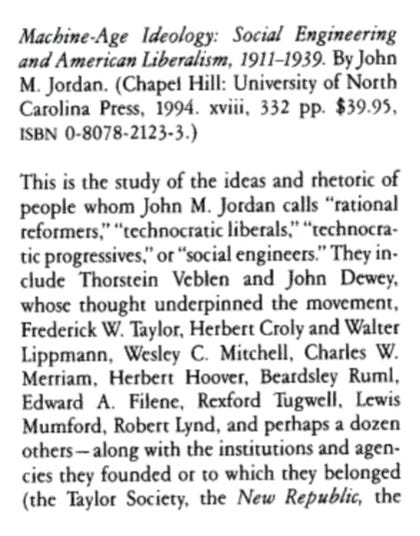We now have more info on what Sam Altman did that was so bad he got fired from OpenAI
Have we got missed this thing?
Dec 10, 2023, 6:21 PM MEZ
In the days that followed Sam Altman's ousting from OpenAI on November 17, employees inside the company and several members of the broader tech community likened the move to a coup.
The narrative in the immediate aftermath of his firing was that broad ranks of OpenAI liked Altman and that his sudden dismissal was shocking — an erratic move by a board that was prioritizing ideology over the demands of its stakeholders and the wishes of its employees.
But over the past few weeks, new details have emerged that shed more light on the board's decision — which was ultimately reversed by a circuitous route — to fire Altman.
These new details suggest that Altman is a skilled corporate schemer who manipulated people and perceptions within OpenAI to maintain his own standing and that his tactics rubbed more than a few people at the organization the wrong way.
Altman vs. Toner
When OpenAI's board first announced Altman's dismissal on November 17, it didn't
https://www.businessinsider.com/what-sam-altman-did-so-bad-he-got-fired-openai-2023-12?r=US&IR=T
Sam Altman out as OpenAI CEO after board loses confidence in him
By Madeline Berg, Hannah Getahun, and Aaron Mok
Nov 17, 2023, 11:09 PM MEZ
OpenAI's board announced CEO Sam Altman is out, effective immediately.
The board of the ChatGPT company said it "no longer has confidence in his ability to continue leading."
Mira Murati, once CTO of OpenAI, will be its interim CEO.
Sam Altman is out at OpenAI.
The board of the AI company, which is behind ChatGPT, announced on Friday that it is "no longer has confidence in his ability to continue leading OpenAI," citing that he was "not consistently candid in his communications."
Mira Murati, who was serving as OpenAI's chief technology officer, will step in as interim CEO until the company chooses a permanent CEO.
"We are grateful for Sam's many contributions to the founding and growth of OpenAI," a statement from OpenAI's board said. "At the same time, we believe new leadership is necessary as we move forward."
Altman responded shortly after OpenAI's announcement.
"i loved my time at openai. it was transformative for me personally, and hopefully the world a little bit. most of all i loved working with such talented people," he posted on X. "will have more to say about what's next later."
Altman posted on X Friday night, writing that the experience felt like "reading your own eulogy while you're still alive."
Until then, Altman's latest post to X was on Tuesday and showed no signs he would be leaving.
On Friday evening, OpenAI president and co-founder Greg Brockman announced he quit the company. In an X post, Brockman said that Altman was unaware that the board, including OpenAI chief scientist Ilya Sutskever, would be removing him as CEO until he joined a Google meeting at noon on Friday.
In 2015, Altman cofounded OpenAI as a research nonprofit focused on building artificial intelligence "in the way that is most likely to benefit humanity as a whole" with a group that included Elon Musk, Greg Brockman, and Trevor Blackwell. Silicon Valley heavyweights like Reid Hoffman and Peter Thiel joined the founders in pledging $1 billion to fund the project.
He took the helm as CEO in 2019, the same year the firm ditched its nonprofit status to become a "capped-profit."
Three years later, in 2022, OpenAI became a household name when it debuted ChatGPT to the world. Within five days, the chatbot had over 1 million users. Two months after launch, it had 100 million monthly active users.
The chatbot's popularity fueled growth at OpenAI, as Microsoft ramped up its investment in the company to the tune of $10 billion. Since then, the company has released more advanced models of its signature chatbot, as well as an updated text-to-image generator DALL-E 3.
"You guys have built something magical," Microsoft CEO Satya Nadella told Altman earlier this month.
Meanwhile, competitors like Google raced to keep up, while an economy of AI startups developed seemingly overnight.
But Altman's time leading OpenAI wasn't without controversy.
In 2020, MIT Technology Review published an investigation into the company, claiming OpenAI fostered a culture of secrecy and hid its research from the general public and competitors.
Prior to OpenAI, Sam Altman was the president of Y Combinator, after his startup Loopt was part of the accelerator's first class. He was praised for increasing the quality of startups that took part in the program.
On the side, Altman was investing in a number of companies, including Reddit, Helion energy, and Instacart.
"You want to invest in messy, somewhat broken companies," he told The New Yorker in 2016. "You can treat the warts on top, and because of the warts the company will be hugely underpriced."
In addition to being the CEO of OpenAI until Friday, he is also the cofounder of Worldcoin, a cryptocurrency project that he launched in 2019.
Taking the reins from Altman as interim CEO is Murati, who formerly led the technology team at OpenAI. A trained mechanical engineer, she worked at Tesla and Leap Motion before joining OpenAI in 2018 as a researcher.
https://www.businessinsider.com/sam-altman-ousted-fired-openai-ceo-chatgpt-maker-2023-11
Isn’t it wired that over all are the same guys on board that pushed panic over chaos to solutions?
Sam Altman: billionaire ChatGPT creator, startup guru and prohet of the apcalypse?
The OpenAI co-founder, who has been touring Europe all week, is a typical Silicon Valley character, also because of his controversial views
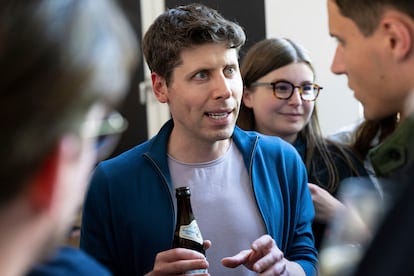
Sam Altman is the CEO of the company that has developed the fastest growing product in history: ChatGPT. While that’s an incredible achievement, it’s not the primary goal of OpenAI, his company. His aspiration is so-called “general artificial intelligence,” a system that itself replicates and enhances the capabilities of a human brain. At 38, Altman no longer has the youth of the classic tech founder, but he is a typical Silicon Valley character. His belief in the limitless power of technology is unwavering: “We have lost our collective sense of optimism about the future. We should all act as if regaining it is a duty. The only way I know of to return to that optimism is to use technology to create abundance,” he said in May in Toronto. Without that abundance created by technology there will be no democracy, he says.
Altman is so confident in technology that he is a poor salesman for his company’s current flagship product. He finds it lacking and highlights its shortcomings as well as its virtues. ChatGPT, a program developed with artificial intelligence (AI) that gives plausible answers to most questions, is for Altman an “impressive, but not robust” technology, as he stressed at a recent conference. “On the first test you have the reaction of ‘this is awesome, and it’s ready,’ but if you use it 100 times, you see its weaknesses,” he explained. The situation is a little like Don Quixote, but Altman’s windmills already have some solid walls, they’re not just daydreams. The entrepreneur likens his plan to achieve general AI to the Manhattan Project, which Robert Oppenheimer led to build the atomic bomb. As Altman likes to point out, he was born on the same day as Oppenheimer, on April 22.
He has an exaggerated confidence in general artificial intelligence, which is something we don’t even know is possible. And he is confident that it will become a reality: “The positive case is so unbelievably good that you sound like a crazy person talking about it. The worst possible event is that we all blow it,” he wrote on Twitter. Altman talks about these apocalyptic prophecies with the calm of someone having a beer with friends; he has, in fact, been doing so for years. In 2015, he wrote: “Popular topic of debate among my friends: will the end of the world be synthetic biology, AI, or energy shortages/war?”
Years before the pandemic, Altman had already embraced the prepper community, a group of people who are prepared to survive an apocalypse on Earth: “My problem is that when my friends get drunk they talk about how the world will end,” he expressed in a 2016 New Yorker magazine profile. “I try not to think about it too much, but I have guns, gold, potassium iodide, antibiotics, batteries, water, Israeli army gas masks, and a ranch in Southern California that I can fly to,” he added. In the aftermath of the pandemic, he still believes we haven’t seen anything: “This is unlikely to be the worst new pandemic we will see in our lifetimes,” he wrote on a post in his blog.
A couple of McLarens in the garage
For Altman, flying to his ranch is not an exaggeration. According to the man himself, one of his two great hobbies is renting airplanes to fly around California. The other is race cars: he has a couple of McLarens and a vintage Tesla, five cars in all. He also makes annual checklists of physical and business goals. He follows a vegetarian diet and intermittent fasting.
Altman grew up in St. Louis, Missouri. At the age of eight he was already tinkering with computers, as is de rigueur in these Silicon Valley success stories. In several interviews he has said that it was not easy to be a teenager and gay in that region of the U.S. in the early 2000s. His first Mac computer and online forums helped him share those secrets. In 2015, at a dinner with Elon Musk, Peter Thiel and other Silicon Valley godfathers, they decided to found OpenAI. Their goal was to compete with Google and DeepMind so that they wouldn’t be the only ones dominating the AI explosion in the future. Altman’s relationship with Musk ended, however. Musk wanted to take full power at OpenAI, but they wouldn’t let him, and he has been trying to torpedo their activity ever since.
Thiel, the driving force behind PayPal and Facebook, is one of his close friends. Before the pandemic, Altman said he would go into seclusion at Thiel’s home in New Zealand. Thiel, a Trump supporter and founder of Palantir, a company with access to sensitive data and dabbling in military technology, gives Altman a reputation as a shady character. Before the 2016 election, Altman had to explain that he did not support Trump, but would continue to work with Thiel.
OpenAI is the second startup co-founded by Altman. The first was Loopt, which he founded at 19 after dropping out of Stanford’s computer science program to develop. He received initial funding from YCombinator, a platform that quickly became famous for helping other technology companies arise, such as Reddit, Dropbox and Airbnb. He managed to sell Loopt (which allowed selective location sharing with others) for $43 million, although he expected much more. At 28, the founders of YCombinator offered him to run their platform: “He has a natural ability to convince people,” said Paul Graham, founder of that company and a leading figure in Silicon Valley. “I met Sam when I was 19, and I remember thinking at the time, ‘So this is what Bill Gates must have been like,’” he added.
Why do I want more money
Money doesn’t seem to be one of his priorities: “I’ve earned more than I’ll ever need,” he said. A year ago he went grocery shopping for his grandmother and later confessed to his mother that he hadn’t been to the supermarket in four or five years. He is more interested in power, according to Graham, and has investments in a lot of startups from which he has made a lot of money. From OpenAI, he claims, he only collects social security; he’s not in it for the profits. In 2016, he said he didn’t want too much: he was content with his house in San Francisco, his cars, his ranch in Southern California and a $10 million nest egg, the annual interest on which would cover his expenses.
The rest, according to Altman, would be for the betterment of mankind.
Now that global success has come his way, legends from his past emerge. Altman is the typical young man who is told by his brothers that he should run for president, and he doesn’t see it as a joke. Altman speaks in a throaty voice and slowly, as if he likes to hear what his voice is going to say. The comparisons he’s already getting are naturally exorbitant: Kevin Scott, chief technology officer at Microsoft, whose company has invested $10 billion in OpenAI this year, told The New York Timesthat Altman will end up on the same plane as Steve Jobs, Bill Gates and Mark Zuckerberg.
While Altman is not obviously famous like a singer or athlete, his impact is greater. This week he spent 24 hours in Madrid as part of a global tour he has organized to listen and be heard. He has met, so far, with the presidents of Spain, France, the UK and Germany. After a talk at the IE University in Madrid, he spent half an hour chatting with students. They took pictures of him and people wanted to tell him their stories (something Altman himself expressly asked for). The conversation flowed as if at a cocktail party someone was attracting more attention, but in a polite way.
How to be successful
With his tenure at YCombinator, Altman also became a startup guru. In 2014, he gave a course at Stanford titled “How to Start a Startup.” There he provided this mathematical formula: “The outcome [of a startup] is something like idea [multiplied] by product, by execution, by team, by luck, where luck is a random number between zero and ten thousand. Literally. But if you do really well in the four areas you can control, you have a good chance of at least some amount of success.” This experience in the business world has led him to write posts on his personal blog with titles such as “How to be successful,” where there are phrases that illustrate his way of seeing the world: “One big secret is that you can bend the world to your will a surprising percentage of the time” or “Self-confidence is immensely powerful. The most successful people I know believe in themselves almost to the point of deluding themselves”.
His first startup, Loopt, was an app to share your location with selected friends and family, one of those ideas that seem good until they collide with the reality of complex human lives. Altman is now co-founder of Worldcoin, a company that aims to collect the irises of all human eyes to certify your identity. One of his stated purposes is that if general AI brings immense wealth into the world, that all that money can be distributed and it will be easier with humans already identified. He always promises as much privacy as possible, but these are approaches that seem to have little thought about their possible misuses. Work, for example, is only one of the problems of the future that he intends to solve: his investment in Helion, a nuclear fusion startup, is one of his major interests today.
The confusion between humans and machines may seem like a fantasy today, but it’s something Altman has been joking about for years. The New Yorker journalist who wrote his profile in 2016 joked that he went to the bathroom infrequently: “I’ll practice going to the bathroom more often so humans don’t realize I’m an AI,” he replied.
Resume
We have a group of influential figures that used strong arms tactics and persuasion to convince people that it’s a great Idea to a have a digital dictatorship and claimed at the same time they could make the world a better place
Reality check
Now we have a bunch of military contractors and philanthropists that buy up all the media and all politicians to create a new systems in wich real human life and jobs are no longer from value and should replaced with AI and robots a new system that will made them to gods over all other life’s, nature and the future.
The PayPal Mafia is a group of former PayPal employees and founders who have since founded and/or developed additional technology companies based in Silicon Valley,[1] such as LinkedIn, Palantir Technologies, SpaceX, Affirm, Slide, Kiva, YouTube, Yelp, and Yammer.[2] Most of the members attended Stanford University or University of Illinois Urbana-Champaign.[3]

Lavender is a software Palantir built for the Israeli IDF...they were using it to bomb Gaza
Elon Musk’s Neuralink says it has approval to test its brain implants in humans
LUIS PABLO BEAUREGARD | LOS ANGELES
AI on the battlefield: Next stop for Peter Thiel after PayPal, Hulk Hogan, Trump and Facebook
DEEP bill barr legalized precrine
After elpasso shooting Trump called on identification social media
With Little Fanfare, William Barr Formally Announces Orwellian Pre-Crime Program
And by the way this was the plan in 2012 by Jeffrey Epstein on saint Thomas…
President Trump calling for emergency declarations to start building "almost immediately" for AI energy plants.
https://rumble.com/v6clb2y-rapid-approvals-on-ai-plants.html
Artificial Intelligence and the ‘Good Society’: the US, EU, and UK approach
https://link.springer.com/article/10.1007/s11948-017-9901-7
Muller, R. A. 2008. Physics for Future Presidents: The Science Behind the Headlines. New York: WW Norton & Company.Search in Google Scholar
The Government Compels Silence – Again
Great job guys you really have create the most evil, inhuman and worst of all worlds.
So now it gets even worst because now it isn’t just a replacement by machines, now machines and AI killed real human beings on a massive scale with this so called for the greater good future technologies.
Machines killed man but in the case of Gaza they kill especially children!
How can anyone ok with this?
https://www.justsecurity.org/90676/unhuman-killings-ai-and-civilian-harm-in-gaza/
https://www.stripes.com/theaters/middle_east/2024-12-30/israel-ai-factory-gaza-war-16323321.html
https://news.un.org/en/story/2024/04/1148561
What the fuck you mean by AI for Good you tech-bustards?
‘Lavender’: The AI machine directing Israel’s bombing spree in Gaza
The Israeli army has marked tens of thousands of Gazans as suspects for assassination, using an AI targeting system with little human oversight and a permissive policy for casualties, +972 and Local Call reveal.
Smoke rises after Israeli airstrikes in Beit Lahia, in the northern Gaza Strip, December 28, 2023. (Yonatan Sindel/Flash90)
In 2021, a book titled “The Human-Machine Team: How to Create Synergy Between Human and Artificial Intelligence That Will Revolutionize Our World” was released in English under the pen name “Brigadier General Y.S.” In it, the author — a man who we confirmed to be the current commander of the elite Israeli intelligence unit 8200
https://www.972mag.com/lavender-ai-israeli-army-gaza/
Suppressed News. on X: “Jounalist Hossam Shabat is now reporting the use of new weapons as well. Israel is testing weapons on Palestinians in Gaza.
https://t.co/qE2b9FVHnF
https://archive.is/TqlS9
Elon Musk’s Starlink to Deliver Internet Nearly Worldwide
https://www.thelastamericanvagabond.com/musk-space-x-satellite-network/
Was Trained in Psychological Manipulation via a Jeffrey Epstein-Funded Program.
In 2011, a small group of extremely influential people met to discuss the future of humanity. Among their ranks were Elon Musk, Jeff Bezos, Nathan Myhrvold, Sergey Brin, and the infamous pedophile child trafficker, Jeffrey Epstein. But this was not the first time these powerful and affluent technophiles had met to determine how best to control society.
Read the article at https://newspaste.com/2024/10/31/musk-epstein-the-third-culture-dossier/
Forgotten knowledge or suppressed infowar?
Palantir - the brainchild from the Total Information awareness program
Thiel
How Palantir Conquered the World
= privatized and unregulated Spy on all American citizens, Inclusive Congress and Industry, Health Care and COVID VACCINES in all processing
If you have no idea about this kind of stuff watch this:
I-Spy the new form of unpresidential experiments in Hospitals during an emergency and beyond with a Amazon based 5 ⭐️ Criterion of assessment… absolutely disgusting
Eugenic I hear your 👻 ( Doctor-Patient-Secrecy = deleted)
The same is happened with Elon Musk:
Musk - the Type that install the greatest spy satellite invation in the near orbit (unseen and uninformed for the public) during covid and the nighttime lockdowns
The type of guy that will connect your brain to the internet and is a massive investor in Curevac the Vaccines printer manufacturer in Germany
https://electrek.co/2020/11/10/elon-musk-tesla-rna-vaccine-printer-curevac-important-product-world/
The type of guy that allows your cars to track you all the time and call the police state to go after you for every small accident that is done. But it get even worst he is the guy who calls his lithium innovation the green future technology that shouldn’t become a TÜV because the car is not only a closed cage if it begins to burn and without extra dangerous foams it would burns for 3-7 days. And don’t forget since the pager attacks we know for sure it could be also a massive bomb under your butt. https://rumble.com/v5tsbk2-bump-an-ev-the-wrong-way-and-this-could-be-your-fate-instantly.....html
Oh and he is the one who don’t want you to drive your car for yourself in the near future but he will have the power to drive and navigate or pause you if “god will”.
It’s so unbelievable unamerican to make people to disabled Full idiots who shouldn't even tie their shoes themselves.
Machines conquered Men!
This are the real invaders that steel all our jobs and nobody talks about it!
https://rumble.com/v14382h-the-great-reset-explained-in-their-own-words-gates-musk-harari-schwab-and-g.html
Why are you as American Dreamers fine with that?
Elon Musk censors the press | CNN Business
Elon Musk ist Technokratie-Fan, aber ein paar Details dürften ihn stören
"We Robot" Elon Musk is a Key Player in the Technocracy Beast System. Rebel Call
https://juli2a5i4.substack.com/p/down-the-rabbit-whole?r=1pk0jl
Jeffrey Epstein bragged about a lunch meeting with Elon Musk in 2012
Musk, Epstein, Staley, Dimon, Pritzer, Obama, and the Chicago Mob Machine....
Echosphere (@hash_tigre) auf X
https://juli2a5i4.substack.com/p/npcoronapredict-a-computational-pipeline?r=1pk0jl
https://juli2a5i4.substack.com/p/all-for-the-money-all-for-the-show?r=1pk0jl
God bless America and help us all…
Machine-Age Ideology: Social Engineering and American Liberalism, 1911–1939(1994).
Myers, H., and M. M. Roberts. 1932. Human Engineering. New York: Harper & brothers.Search in Google Scholar
So we have nothing learned from history!
The American Eugenics Society successfully advocated for the eugenics movement, positioning their work as a solution to the issue of race suicide. The Society was able to make broad appeals that could garner the support of reformists, college students, professors, conservative legislators, and the public alike. Through its engagement with its membership, collaboration with other organization, and reliance on credibility, the American Eugenics Society could build a sustainable, successful movement. Eugenics was not a pseudoscience, as it commanded the attention and respect of highly respected individuals and institutions alike with the leadership of the Society. In uncovering these histories and the involvement of prominent academics, we can better hold institutions like Yale accountable for it role in leading the eugenics movement.
References
April Calendar. 1931. Women Voters Bulletin, XI(11), 6. https://link.gale.com/apps/doc/FENLAL652295954/ NCCO?u=29002&sid=bookmark- NCCO&xid=578ac64d.
Bashford, Alison, and Philippa Levine, eds. The Oxford Handbook of the History of Eugenics. Oxford University Press, Oxford, 2010, 5.
Bass, Paul. 2014. “Cross Era’s Dark Secret Resurfaces.” New Haven Independent, December 24. https:// www.newhavenindependent.org/article/cross_eras_ dark_secret_resurfaces/.
Bingham, Jonathan Brewster. Letter to Ellsworth Huntington. New Haven, Connecticut: Yale Daily News, March 18, 1935.
Bix, Amy Sue. 1997. “Experiences and Voices of Eugenics Field-Workers: ‘Women’s Work’ in Biology.” Social Studies of Science 27(4): 625–68. http://www. jstor.org/stable/285560.
Black, Edwin. 2012. War Against the Weak: Eugenics and America’s Campaign to Create a Master Race. New York, NY: Four Walls Eight Windows.
Boudreau, Erica Bicchieri. 2005. “‘Yea, I Have a Goodly Heritage’: Health Versus Heredity in the Fitter Family Contests, 1920-1928.” Journal of Family History. 30, no. 4. October. https://doi. org/10.1177/0363199005276359.
Boyle, Alix. 2015. “Connecticut’s Little Known Brush with Eugenics.” Hartford Courant, March 31. https:// www.courant.com/hartford-magazine/hc-nh-secret- history-eugenics-20150331-story.html.
Bozeman, John M. “Eugenics and the Clergy in the Early Twentieth-Century United States.” The Journal of American Culture 27, no. 4 (12, 2004): 422-431. https://www.proquest.com/scholarly-journals/ eugenics-clergy-early-twentieth-century-united/ docview/200636270/se-2?accountid=15172.
Conditions of the Awards for the Best Sermons on Eugenics. New Haven, Connecticut: The Committee on Cooperation with Clergymen of the American Eugenics Society, 1926.
Eugenics in a Planned Society. New Haven, Connecticut: The American Eugenics Society, 1934.
Farber, Steven A. 2008. “U.S. Scientists’ Role in the Eugenics Movement (1907-1939): A Contemporary Biologist’s Perspective.” Zebrafish. December. https:// www.ncbi.nlm.nih.gov/pmc/articles/PMC2757926/.
Financial Statement from July 4, 1936, to August 21, 1936. New Haven, Connecticut: American Eugenics Society, 1936.
Fisher, Irving. Eugenics. Good Health Publishing Company, 1913.
Fisher, Irving. Report of the President. New Haven, CT: American Eugenics Society, Inc., 1926.
Fourth Report of the Committee on Selective Immigration. New Haven, Connecticut: American Eugenics Society, June 30, 1928
Galton, Francis. Inquiries into Human Faculty and its Development. Macmillan, 1883, 24-25.
Huntington, Ellsworth. “Template Letter for Eugenics Questions for College Students.” New Haven, Connecticut: Yale University, March 5, 1935b.
Huntington, Ellsworth. Eugenics Questions for College Students. 1935a.
____________. Letter to Dr. Marie E. Kopp, March 31, 1936b.
____________. Statement Concerning the Executive Secretary of the American Eugenics Society. August 20, 1936a.
____________. Tomorrow’s Children: The Goal of Eugenics. New York: J. Wiley & Sons, Inc., 1935c.
Kline, Wendy. Building a Better Race: Gender, Sexuality, and Eugenics from the Turn of the Century to the Baby Boom. Berkeley, CA: University of California Press, 2005.
Laughlin, Harry H. Eugenical Sterilization, 1926: Historical, Legal, and Statistical Review of Eugenical Sterilization in the United States. New Haven, Connecticut: The American Eugenics Society, 1926.
____________. Eugenical Sterilization in the United States. Chicago, Illinois: Court. 1922.
____________. The Survey of the Human Resources of Connecticut. Cold Spring Harbor, New York: Eugenics Record Office, 1938.
Letters Received from January 1, 1933, to April 1, 1933. New Haven, Connecticut: The American Eugenics Society.
List of Invitations to the Eugenics and Education Conference. New York, New York: The American Eugenics Society, 1937.
Lombardo, Paul A. 2018. “The Power of Heredity and the Relevance of Eugenic History.” Nature Publishing Group, July 31. https://www.nature.com/articles/ s41436-018-0123-4.
MacArthur, Kenneth C. Letter to Professor Ellsworth Huntington. “Debts to 1930 Sermon Contest Winners.” Sterling, Massachusetts, February 7, 1938.
Membership Dues and Invitation to New Members. New York, New York: American Eugenics Society, n.d.
Messall, Rebecca. “The Long Road of Eugenics: From Rockefeller to Roe v. Wade.” Human Life Review (2004).
Minutes from the Board of Directors Meeting of the American Eugenics Society. New York, New York: May 28, 1936.
Minutes of Meeting of Board of Directors of the American Eugenics Society. New York, New York: October 8, 1936.
Minutes of Meeting of Board of Directors. American Eugenics Society. June 11, 1936.
Notestein, Frank W. Letter to Ellsworth Huntington. “Revisions to Tomorrow’s Children.” New York, New York: Milbank Memorial Fund, July 19, 1935.
Osborn, Frederick. History of the American Eugenics Society. Social Biology, 1974. https://doi.org/10.1080/ 19485565.1974.9988099
Paul, Diane B. & Hamish G Spencer. 1995. “The Hidden Science of Eugenics.” Nature Publishing Group, March 23. https://www.nature.com/articles/374302a0.
Practical Eugenics. Aims and Methods of the American Eugenics Society. New York, New York: American Eugenics Society, 1938.
Preliminary Suggestions for Topics of Discussion at the Conference on Eugenics and Education. New York, New York: The American Eugenics Society, 1937.
Problems in Eugenics: Papers Communicated to the First International Eugenics Congress Held at the University of London, July 24th to 30th, 1912. Vol. 1. N.p.: Eugenics Education Society, 1912. Nineteenth Century Collections Online. https://link.gale.com/apps/ doc/AGRUEL365049336/NCCO?u=29002&sid=gale_ marc&xid=8b86a53e&pg=1.
Report of Activities of the American Eugenics Society Presented at the Twelfth Annual Meeting of the Society. New Haven, Connecticut: American Eugenics Society, 1937.
Report of Activities of the American Eugenics Society, 1936-1937. New York, New York: 1937.
“Suggested Programs for Clubs and Other Organized Groups Interested in the Betterment of the Human Race.” New Haven, Connecticut: The American Eugenics Society, 1926.
The American Eugenics Society. New Haven, Connecticut: The American Eugenics Society, 1927.
Whitney, Leon F. Letter to The American Eugenics Society Membership. “Immigration Program.” New Haven, Connecticut, November 1930a.
____________. Letter to The American Eugenics Society Membership. “Support for Senator David A. Reed’s Emergency Immigration Measure.” New Haven, Connecticut, December 1930b.
____________. Letter to THE MEMBERS OF THE AMERICAN EUGENICS SOCIETY. “Discount for E. M. East’s Book, Heredity in Human Affairs.” New Haven, Connecticut, 1927.
____________. Letter to THE MEMBERS OF THE AMERICAN EUGENICS SOCIETY. “Another Discount for E. M. East’s Book, Heredity in Human Affairs.” New Haven, Connecticut, 1928.
Wiggam, Albert Edward. Letter to Mr. R. L. Duffus, November 13, 1935.
Ladd-Taylor, Molly. Fixing the Poor: Eugenic Sterilization and Child Welfare in the Twentieth Century. Baltimore: Johns Hopkins University Press, 2017, doi:10.1353/book.57194.



